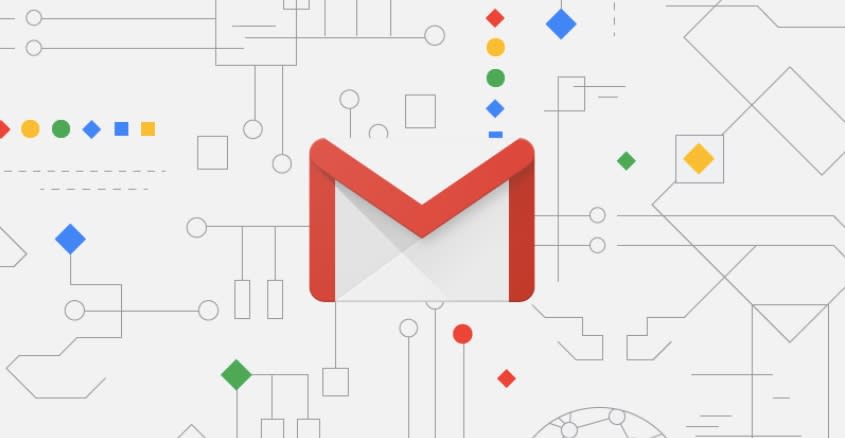Gmail still lacks these important features

Gmail has a new look and new tools today, courtesy of a redesign that Google (GOOG, GOOGL) pushed out two weeks before its big I/O developer conference.
The update to Gmail — available in a browser if you click the gear icon at the top right and select “Try the new Gmail”— adds such thoughtful features as “nudges” that remind you not to flake out on frequent correspondents and the ability to “snooze” an email, so it will pop back to the top of your inbox after a set period of time.
Unfortunately, the redesign is missing fixes to some longstanding issues with Google’s widely-used mail service.
End-to-end encryption
Much coverage of the new Gmail has focused on its new Confidential Mode, a feature that lets you send a restricted-access message. You can set it to erase automatically after a set period, you can lock it with a one-time passcode, and you can prohibit the recipient from forwarding, downloading, printing or copying its text.
(If you don’t use Gmail and get a Confidential Mode message, you’ll have to read it on the Web. Or so Google tells me — the feature isn’t active in my account yet.)
But Confidential Mode doesn’t secure a message against eavesdropping at each end of the conversation — even when stored in your Sent mailbox.
Four years ago, Google was working with Yahoo (Yahoo Finance’s parent firm) on a project to provide that level of security by allowing users to enable end-to-end encryption. This project has not shown signs of life in years–but in the meantime, other developers have been able to deliver that level of security.
The free, open-source Signal messaging app offers end-to-end encryption by default, and Apple (AAPL) does the same for communications between its desktop and mobile devices using iMessage and FaceTime. Facebook’s (FB) WhatsApp also scrambles messages from end to end, although selecting its online-backup option will negate that security by keeping un-encrypted copies of your messages. In 2016, Facebook made end-to-end “crypto” an option in its Messenger mobile apps.
Insert links in mobile
Google as a search engine would not exist without being able to rank pages based on how many other pages link back to them. But the company’s Android and iOS Gmail apps place so little value on hyperlinks, they don’t even let you turn a few words into one the way you can in Gmail’s web app or any desktop mail app.
Instead, you’ll have to paste in the actual web address, as if in a plain-text mail client: not “click here,” but “click here (wikipedia.org/wiki/Hyperlink).”
This has been confounding users for years—and at some point, it seems to have convinced Apple that it, too, should ship a mobile mail app without this most basic of features.
Gmail’s mobile apps do, however, let me insert stickers into messages. Google may have accumulated an immense inventory of data about me, but apparently it still thinks I’m six years old.
Sweep aside expired messages
Not all electronic correspondence is for the ages, or even for the weeks. Microsoft (MSFT) recognized this years ago when it added a helpful “sweep” function that lets you designate particular messages for scheduled deletion.
It’s a wonderful tool for dealing with the deluge of messages devoid of relevance past the next week or so: daily-deal pitches from the likes of Groupon (GRPN), marketing newsletters, reminders to attend upcoming events and almost anything with “webinar” in the subject line.
But while the new Gmail grasps the idea of a message being worth your attention at some set time in the future, it still has no idea that some messages can have an expiration date.
Industry-standard contacts import and export
Google has been saying and doing the right things about data portability for almost a decade now. In general, if you want to take your data out of a Google app or site, you can — and Google lets you do so in a standard format that you should be able to upload to a competitor.
But the new version of Gmail, like the old, still makes you jump through extra hoops to export your contacts in the “vCard” format most likely to be supported cleanly by any other contacts app.
Selecting a vCard export option from Google’s Contacts web app (click or tap the tiny person icon at the bottom left of Gmail’s page) still yields an instruction to revert to “the old Google Contacts”—as in, the one Google replaced in 2015. You’ll also have to do this to import a vCard from another app, such as Apple’s Contacts.
How is a bug this lame still unfixed in 2018? Maybe the product manager involved was using a beta version of the new Gmail and snoozed the message imposing a deadline until sometime in 2020.
More from Rob:
Email Rob at [email protected]; follow him on Twitter at @robpegoraro.
